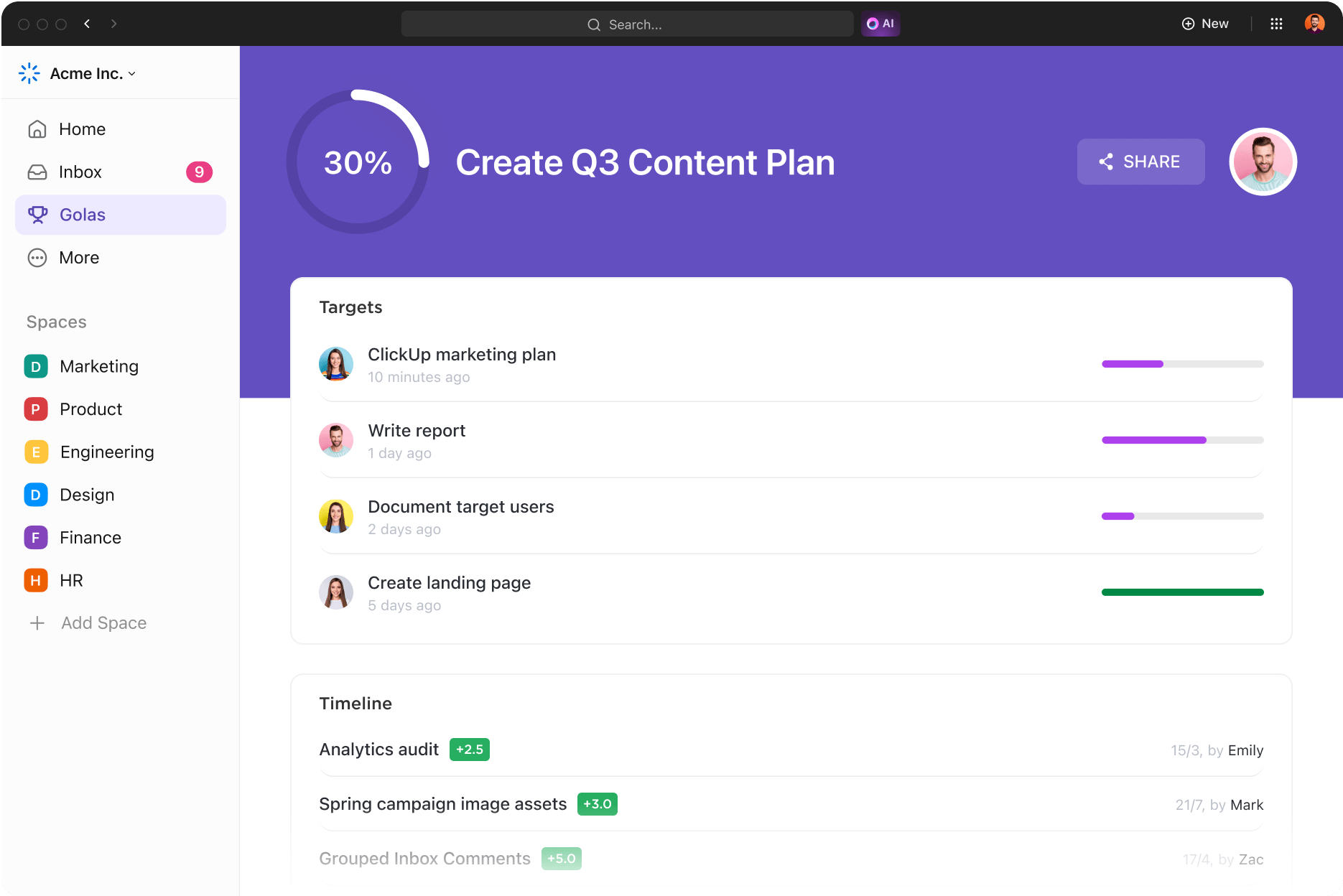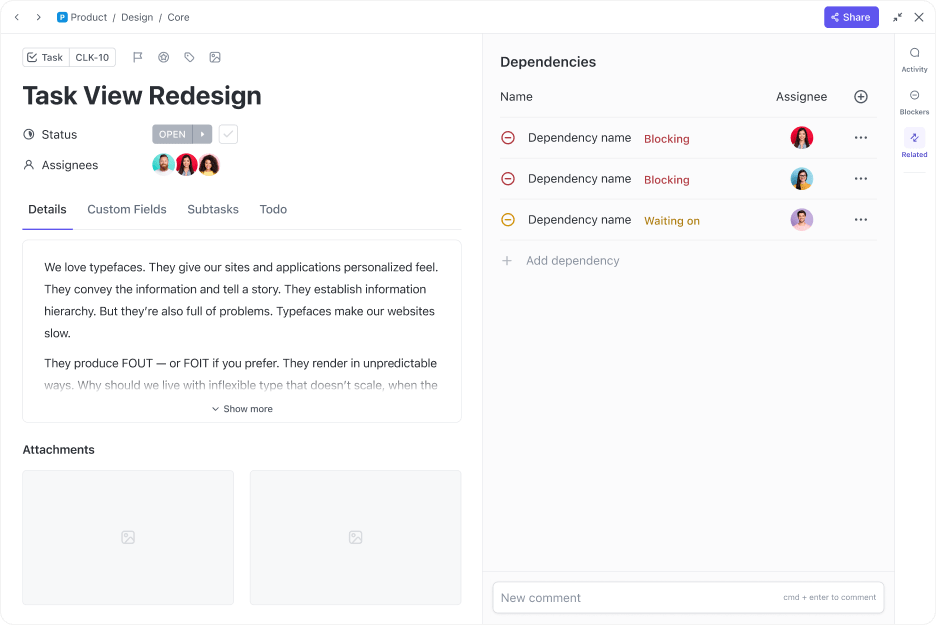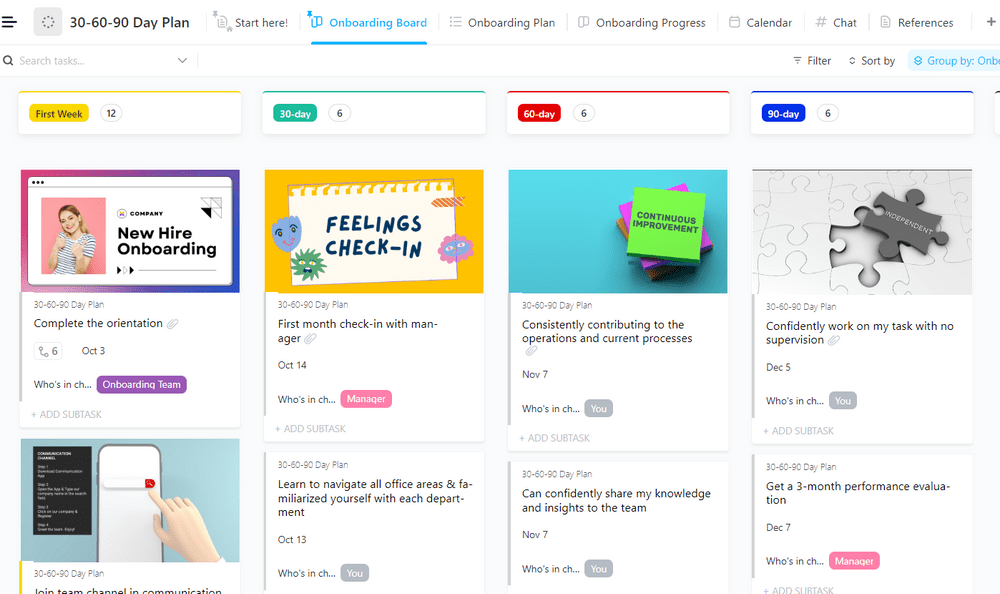“The First 90 Days” Summary: Key Takeaways and Review

Sorry, there were no results found for “”
Sorry, there were no results found for “”
Sorry, there were no results found for “”

You just got a promotion or maybe you’re transitioning to a leadership role at a new company. Congratulations! This career move is sure to be rewarding but can also be among the most difficult job transitions.
You have to learn about entirely new company structures, build rapport with a new team, and handle the logistics of taking on new work. Luckily, with a focus on learning and staying organized, you can achieve success in your new role.
Here, we’ll share key takeaways and some of our favorite leadership quotes from “The First 90 Days: Proven Strategies for Getting Up to Speed Faster and Smarter” by Michael D. Watkins. This book is all about learning, adaptation, and management techniques when transitioning to a new leadership job. In this “The First 90 Days” summary, we’ll also share a seven-step checklist for transitioning into your new role with actionable advice. ✨
But before that, if you’re interested in reading more book summaries, check out our curated collection of 25 Must-Read Productivity Book Summaries (including “The First 90 Days”) in one place. You can save, edit, bookmark, and even export it from ClickUp Docs.
Did you just get promoted or step into a new leadership role? Congratulations! The first 90 days are crucial for success.
“The First 90 Days” is a book by Michael Watkins offering a road map and strategies for people making professional leadership transitions. In this quick “The First 90 Days” summary, you’ll learn what the book is about, who the author is, and how it can help in your leadership transition.
Michael Watkins is a renowned leadership and negotiation expert. He’s a Professor of Leadership and Organizational Change at IMD Business School, is the co-founder of Genesis Advisers, and has two decades of experience working in leadership. He was also inducted into the Thinkers50 Leadership Hall of Fame thanks to his background and numerous written works on leadership — including “The First 90 Days.” 🏆
In “The First 90 Days,” readers learn about career transitions within an organization as well as to new businesses. The book covers how critical the initial 90 days are with new leadership employment. It covers strategies and tips to help with everything from employee onboarding to advice on how to delegate.
Broken into 10 chapters, each one is centered on a strategy. The first 30 days focus on preparing, learning, and creating a plan. The next 30 days are about securing early wins and building a team. The final 30 days focus on management and accelerating success for the entire team.
Read on for a continuation of our “The First 90 Days” summary, where you’ll learn more about the key takeaways of this book and how you can create your own checklist for making a successful transition. 👀
Whether you’re looking for project management tips for a new management role or a plan to transition into a new C-Level position, Michael Watkins’ book delivers. Here, we continue our “The First 90 Days” summary with five key takeaways.
When transitioning to a new job, one of the first things you need to think about is what type of leader you are and how that works in different business cases. This involves understanding your impact as well as the different business situations your new organization faces. 🧐
To do this, Watkins suggests using the STARS model—an acronym that stands for five common business situations:
By matching your strategies and leadership style to the specific business situation, you’re more likely to make a smooth transition. Plus, it’s easier to keep everyone on the same page and working toward the same goal.
Joining or building a new team is about more than just implementing onboarding software. You need to make connections and build relationships with everyone on your team. Without this critical step, it’ll be hard to get support and buy-in, especially if your transition involves taking the company in a new direction. 🤝
Watkins recommends having what he calls “the five conversations.” These encompass discussions you should have with your boss and your new team.
They include:
Early wins are a great way to build your credibility and reach the break-even point sooner—the point at which the company’s investment matches your contribution. By securing early wins, you build momentum and excitement for everyone on the team to reach even loftier goals. 🥇
Watkins suggests focusing on building credibility in the first 30 days and launching projects that are easy wins. To build credibility, talk to your team and figure out what they know about you. After all, you have a reputation, and you need to understand what that is to lead effectively. Once you know what they know, you can build on the existing credibility or establish it.
To be an effective and credible leader, it’s important to be accessible and set realistic expectations. Establish authority, but make sure you stay approachable. You also want to set clear demands and lofty goals but make sure they’re attainable as well.
Once you’ve established credibility, it’s time to set goals for early wins. Keep in mind any long-term goals and break them down into smaller, attainable ones. Focus the team on specific goals to keep everyone working toward the early win and avoid distractions.
As a leader, you’re responsible for guiding the team and making sure everyone is working toward the same goals. That means ensuring alignment not only in priorities but structures and team units. ✍️
Watkins argues that four organizational structures need to be aligned for success:
Spend time thinking about potential misalignments, and put plans in place to avoid them. Focus especially on misalignments in terms of skill and direction, including individual team member capacity and capabilities.
As a leader, you know how important having a good team is. People will be at the center of the most important decisions you’ll make in your first 90 days. Watkins suggests starting with assessments of existing teams.
You don’t want to make changes too quickly, especially without understanding the existing situation. Establish an evaluation system with specific criteria based on skills and decision-making styles. Evaluate teams and individuals using specific KPIs based on the actual work they do.
By the end of the first 30 days, you should be able to make employment decisions based on your assessments. Watkins recommends grouping people into the following categories:
Your team will evolve, so make sure to revisit this process after your first 90 days. Be open to change, and adapt the team as the company’s goals and direction shift.
The hardest part of transitioning to a new leadership role is leaving old habits in the past. Even with a new team, new tasks, and a new company culture, it’s easy to fall back into the same routine you used to have—and one that doesn’t fit your new role well. ⚠️
To avoid this dilemma, Michael Watkins recommends starting each new role with a seven-step checklist. As we continue our “The First 90 Days” summary, we break down this seven-step checklist so you can implement it fast.
It’s important to take time to celebrate the new transition. Whether that means spending time with friends over the weekend or grabbing a celebratory dinner with family, it’s key to celebrate your success.
It’s also important to spend time reflecting on what you’re leaving behind and what lies ahead. Consider what things you wish worked better in your old role, and set expectations for what’s to come in your new role.
Make a list of likely problems—including technical, cultural, and political issues—across key business divisions. These can include finance, HR, tech, and marketing. Rank each potential problem on a scale of one to 10. Decide which problems you can—and want—to solve and which ones you’ll need to garner support for.
Spend some time thinking about your strengths and what makes you an effective leader. Think about what you did well in your past role and situations where you think you may have fallen short. Consider how these skills will serve you in your new job and how they may hinder your success in certain business situations.
Whether you were part of a leadership team at a startup, nonprofit, or multinational company, you have a track record of success. With so many wins under your belt, it’s easy to fall into the trap of thinking you know best.
When moving to a new position, it’s important to create a learning mindset. Things that have worked in other roles may not be as successful in your new position. Think about personal development and leadership development as you move into your new role. Take classes, be open to learning from colleagues, and consider new approaches to old problems.
For new leaders and old leaders alike, having a solid network to turn to is invaluable. Take stock of your network, and see which individuals can help you make a smoother transition. Lean on old mentors, and look for gaps where you may need someone new to help you out. Make connections and build relationships with these individuals so you have the support you need to achieve accelerated growth.
Whether you’re moving to a new organization or getting promoted internally, some people may not be as happy about the change as you are. They may try to prevent you from being successful or limit your access to necessary resources.
Whether it’s new team members, a new manager, or old colleagues, be mindful of these vulnerabilities. Focus on managing these working relationships, set clear expectations, and build a communication plan to address problems.
The first day of something new is always equal parts scary and exciting. Don’t be afraid to ask for help—whether it’s from your new boss or a direct report on your team. Reach out for help and resources when you need them, especially during the first 90 days when you’re getting settled in.
💡📚 Bonus: If you’re interested in reading more book summaries, check out our curated collection of 25 Must-Read Productivity Book Summaries in one place. You can save, edit, bookmark, and even export it from ClickUp Docs.

Michael Watkins’ book is full of wisdom for leadership professionals. Not only does he know his stuff, but he also says it in a way that’s inspiring and engaging.
Here are some of our favorite quotes from “The First 90 Days:”
Want to learn how to prioritize tasks during your first 90 days? We’ve got just the video for you!
With project management software like ClickUp, you can implement key takeaways from this “The First 90 Days” summary faster and easier than ever. Here are some of the best features of ClickUp to make your transition to a new leadership role seamless. 🤩

ClickUp Goals makes it easy to set and track long-term goals and avoid misalignment along the way. Set clear timelines. and add measurable targets for each team, department, or the company at large. Automate progress tracking, and create folders to easily see goals for different team members and departments.

📮ClickUp Insight: 92% of knowledge workers risk losing important decisions scattered across chat, email, and spreadsheets. Without a unified system for capturing and tracking decisions, critical business insights get lost in the digital noise. With ClickUp’s Task Management capabilities, you never have to worry about this. Create tasks from chat, task comments, docs, and emails with a single click!
Use ClickUp’s Task assignment and status features to build your team, keep track of everyone’s responsibilities, and avoid misalignments with your new team. Assign priorities to each task to let everyone know what work is most important. Add dependencies so team members can see what work is preventing progress on other tasks.

Stay organized with ClickUp Spaces, especially if your leadership position involves overseeing various departments. Customize each Space with Lists and Folders to keep things like SOPs, company documents, and project resources all in one place. Trigger custom notifications to ensure effective communication any time big changes are made or projects are completed.
ClickUp also offers more than 1,000 templates—including several 30-, 60-, and 90-day plan templates—to make everything from goal setting to employee onboarding easier than ever. The 30-60-90-Day Plan Template from ClickUp offers an actionable plan for the first three months in your new role. Use it to outline goals, identify tasks, set deadlines, and track progress.

You’ll also find dozens of SOP templates to create a culture of organization. Use these to onboard new team members or build better processes for the existing team to implement.
With these strategies and tips from “The First 90 Days,” you’ll have what you need to transition smoothly to your new role. From building better teams to aligning strategies and securing early wins, this book offers a roadmap to leadership success.
Take your leadership game to the next level and sign up for ClickUp today. This project management software makes it easy to onboard new employees, set measurable goals, and track progress every step of the way. Plus, it’s customizable, so you can build a system that’s adaptable and fits the needs of your new organization. 🙌
© 2025 ClickUp